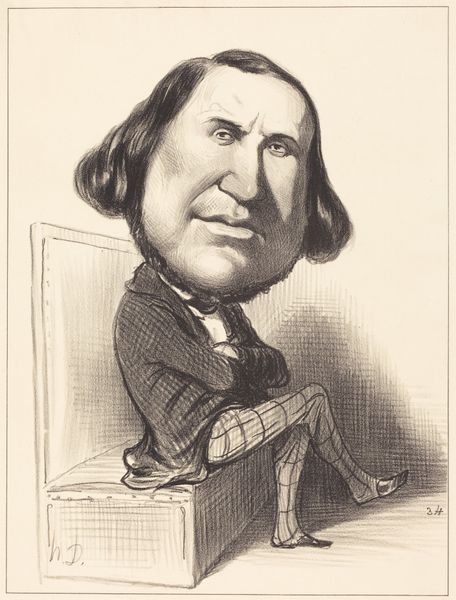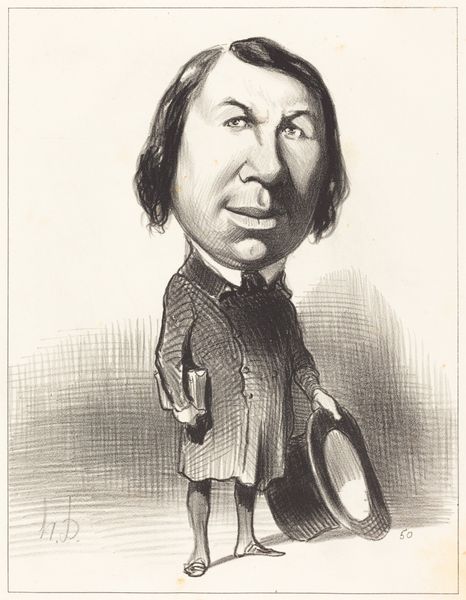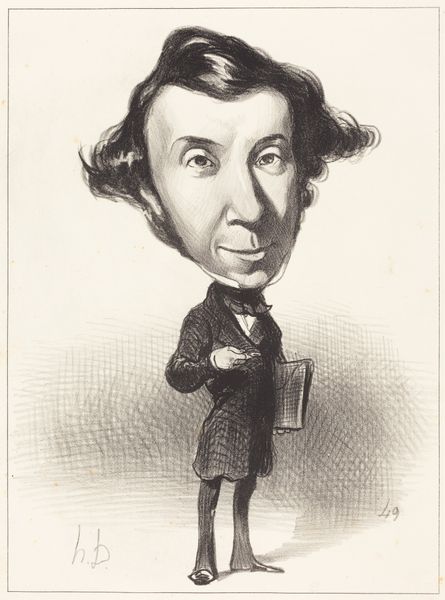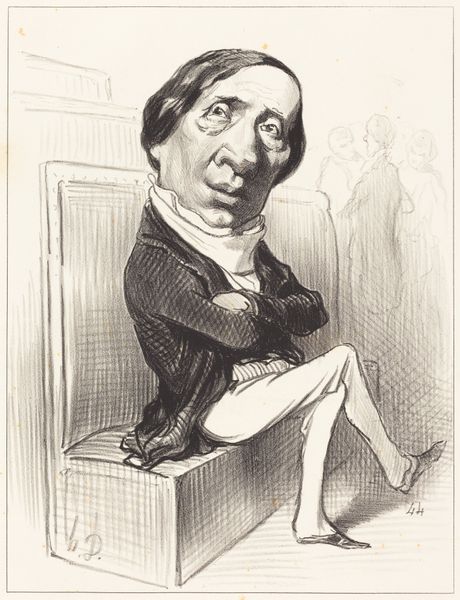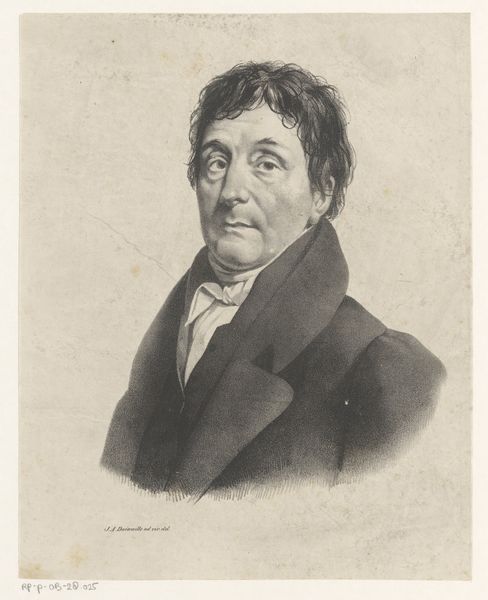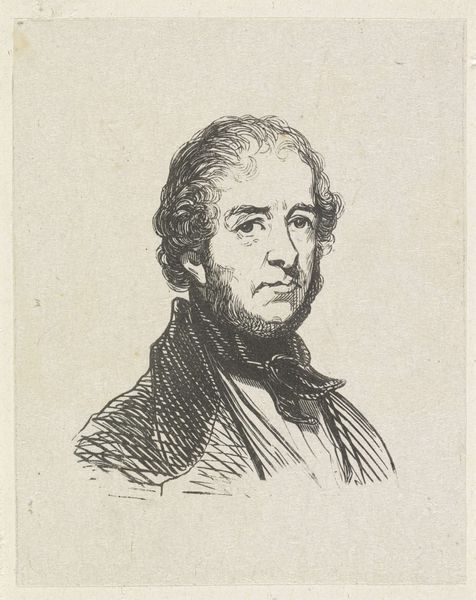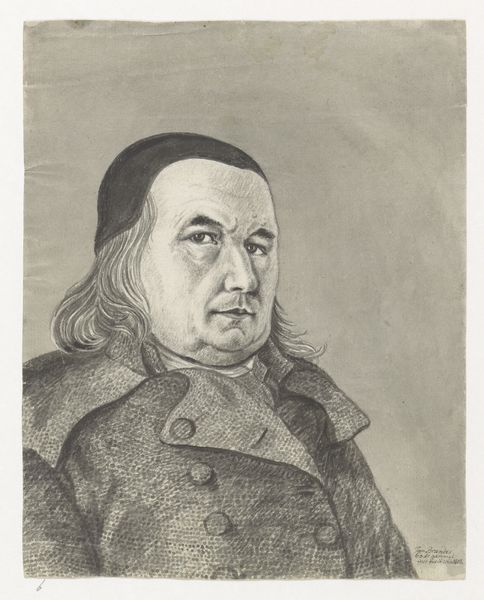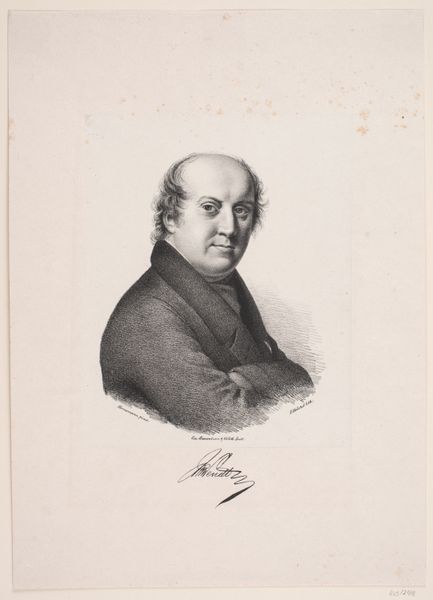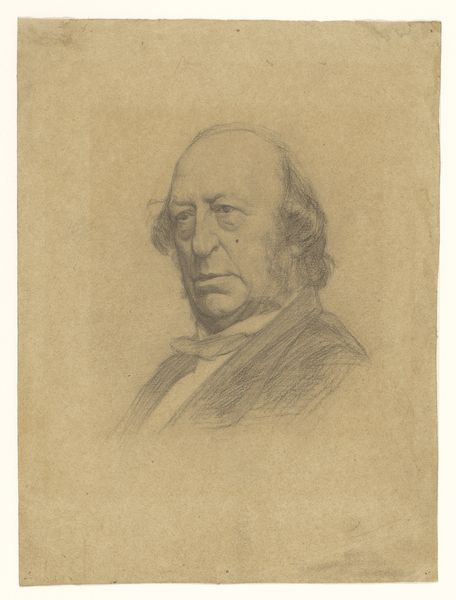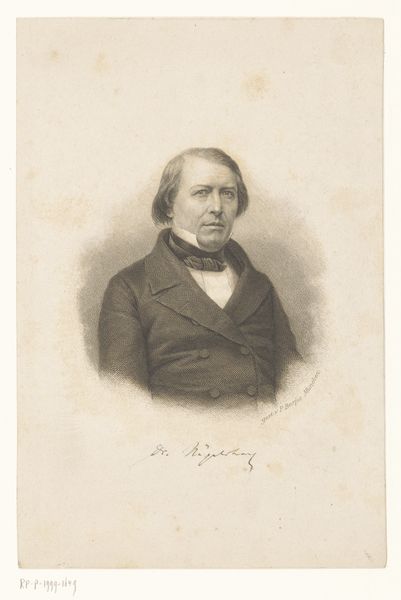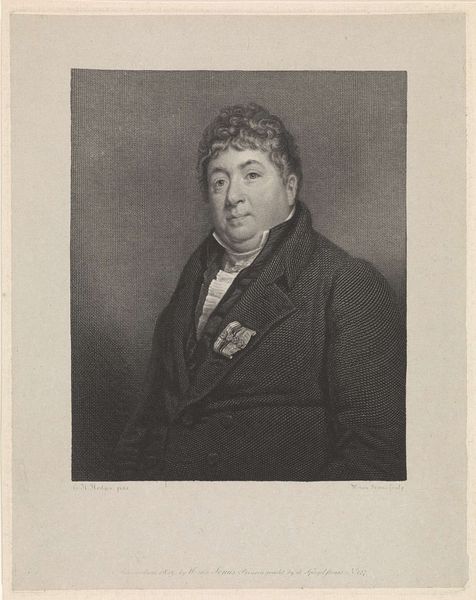
drawing, lithograph, print, pen
#
portrait
#
drawing
#
lithograph
# print
#
french
#
caricature
#
caricature
#
romanticism
#
pen
#
portrait drawing
Copyright: National Gallery of Art: CC0 1.0
Curator: This lithograph, made in 1848, is a caricature of Emmanuel Arago, created by Honoré Daumier. It's executed in pen on paper, typical of Daumier's sharp, incisive style. Editor: Immediately, I'm struck by the exaggerated proportions. The oversized head and prominent nose command attention, almost overpowering the figure's body. There's a comical defiance in that stance, too. Curator: Exactly. Daumier was a master of political caricature, and this piece speaks volumes about the perception of Arago at the time. 1848 was a year of revolution in France, and figures like Arago were under intense public scrutiny. Daumier used his art to reflect, and often critique, the political landscape. Editor: I see the somewhat unsettling expression as almost a symbolic representation of societal unrest, those questioning looks of that time, mirrored in his own questioning glare. And, even down to the flowing hair which could symbolize being somewhat 'untamed' in this portraiture. Curator: Daumier cleverly utilizes clothing and stance here, with a clear nod to class critique as well, though couched in visual humor. Observe how the meticulously rendered folds of the suit contrast with the subject's awkward posture. The artist implies a tension between Arago’s societal standing and his personal qualities. Editor: True, but I can't help but see a broader symbolic dimension at play here. Daumier exaggerates his features—that voluminous nose, for example—beyond simple physical characteristics. To me they signify traits attributed to Arago or others of influence at that time—power, arrogance, or perhaps even vulnerability. It acts almost as a mirror held up to the ideals, as well as the failings, of those holding influential posts. Curator: That is an insightful perspective. While it's presented through caricature, this piece goes beyond simple mockery. Daumier encourages us to confront complex social and political realities. This work offers a tangible lens into the charged atmosphere of 1848. Editor: I agree. This piece showcases a particular political viewpoint from Daumier, but by visually emphasizing symbolism over realism, that initial impact—of perhaps comedic mockery, becomes more psychologically interesting and multifaceted. It serves as an interesting example of art functioning as cultural commentary. Curator: Absolutely. Daumier's print really is so much more than it appears on the surface, with much complexity being hidden underneath an intentional humor. Editor: Ultimately a testament to art's capacity to reflect cultural anxieties.
Comments
No comments
Be the first to comment and join the conversation on the ultimate creative platform.
